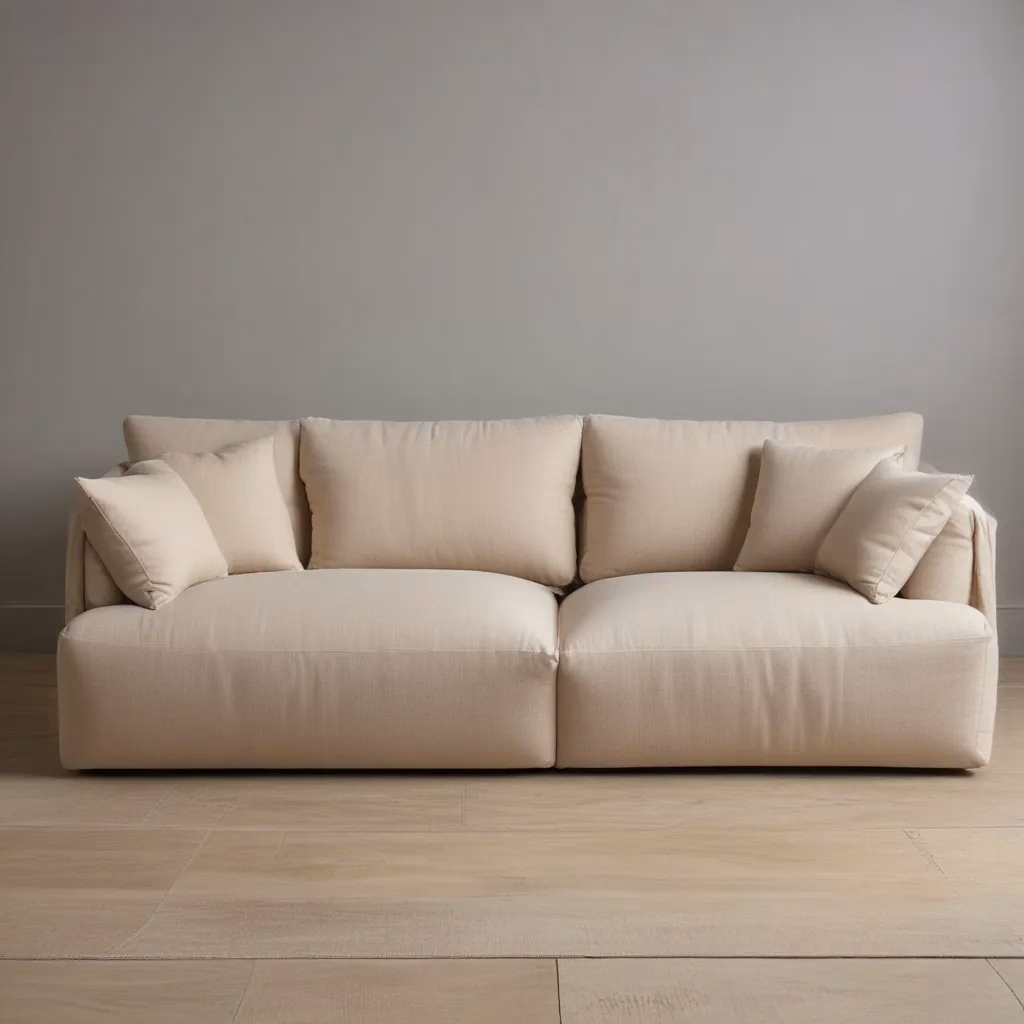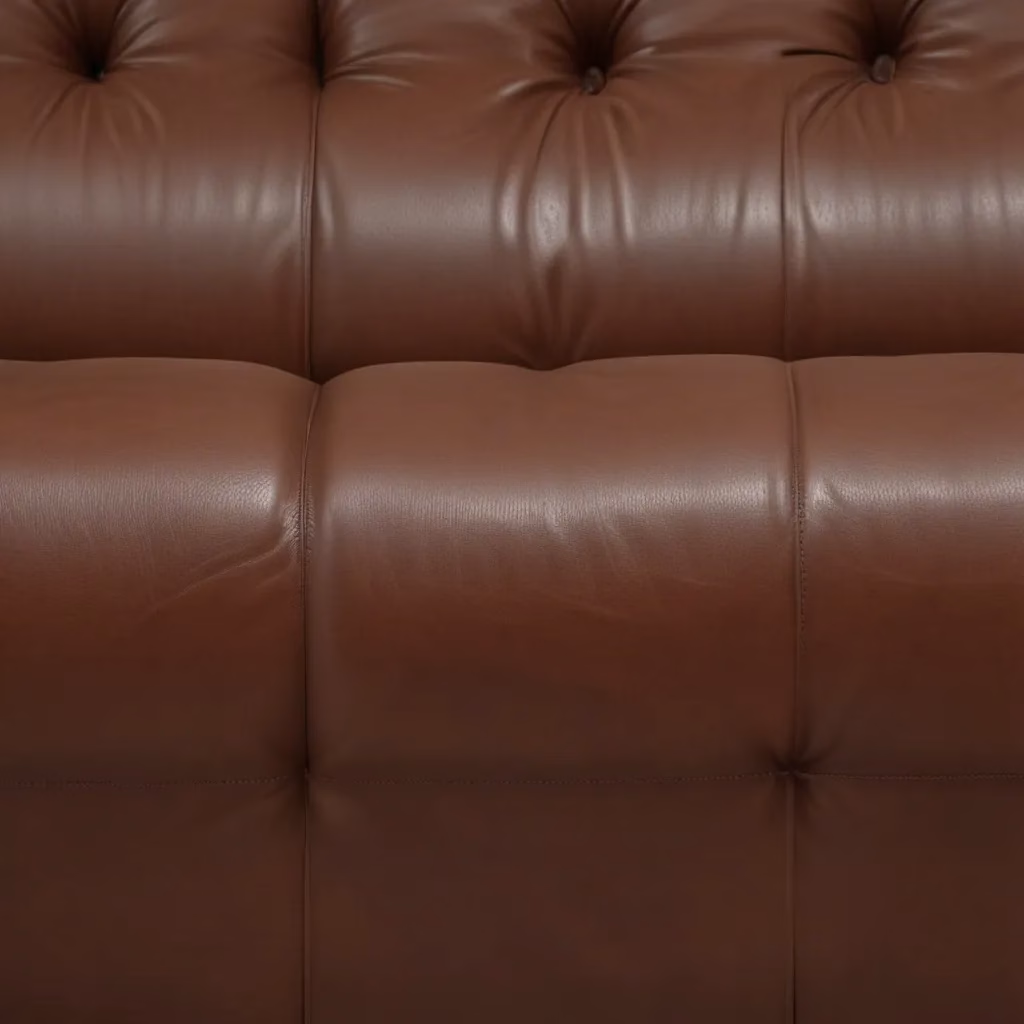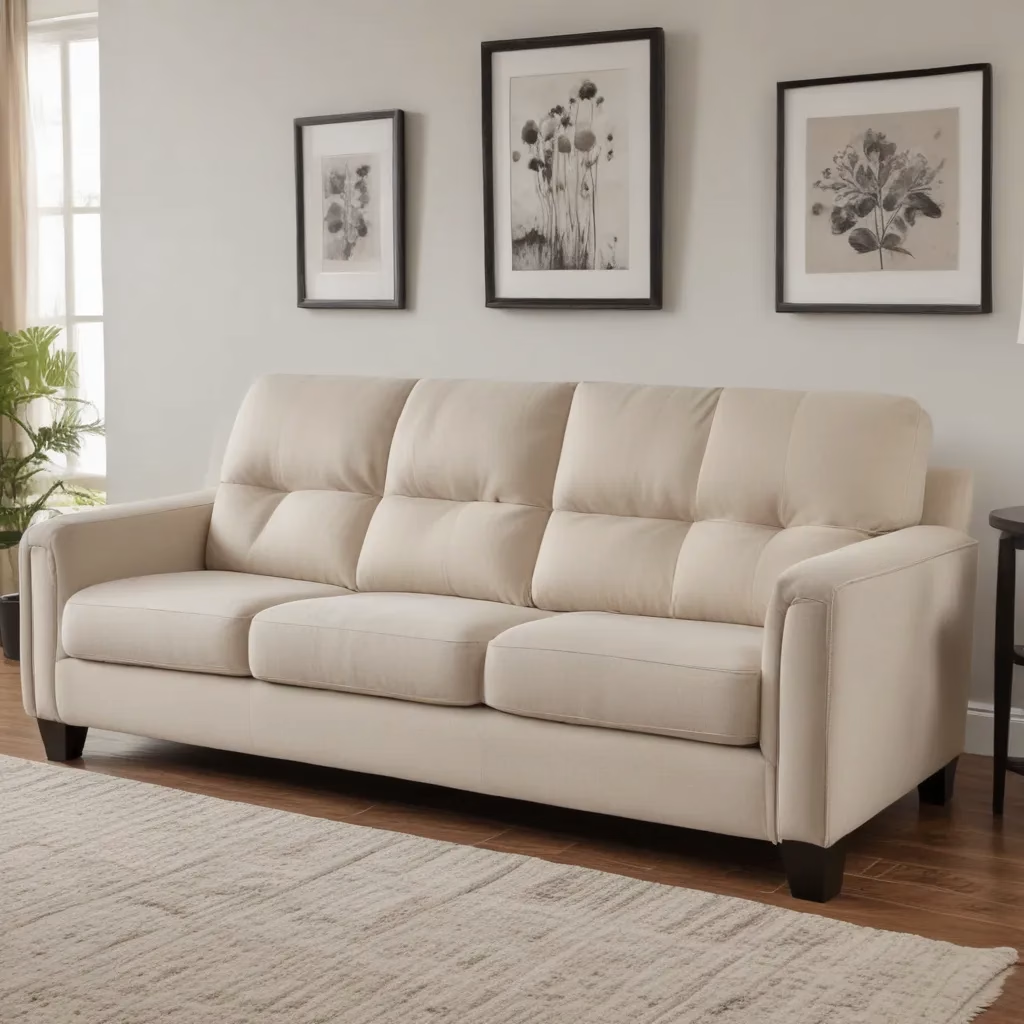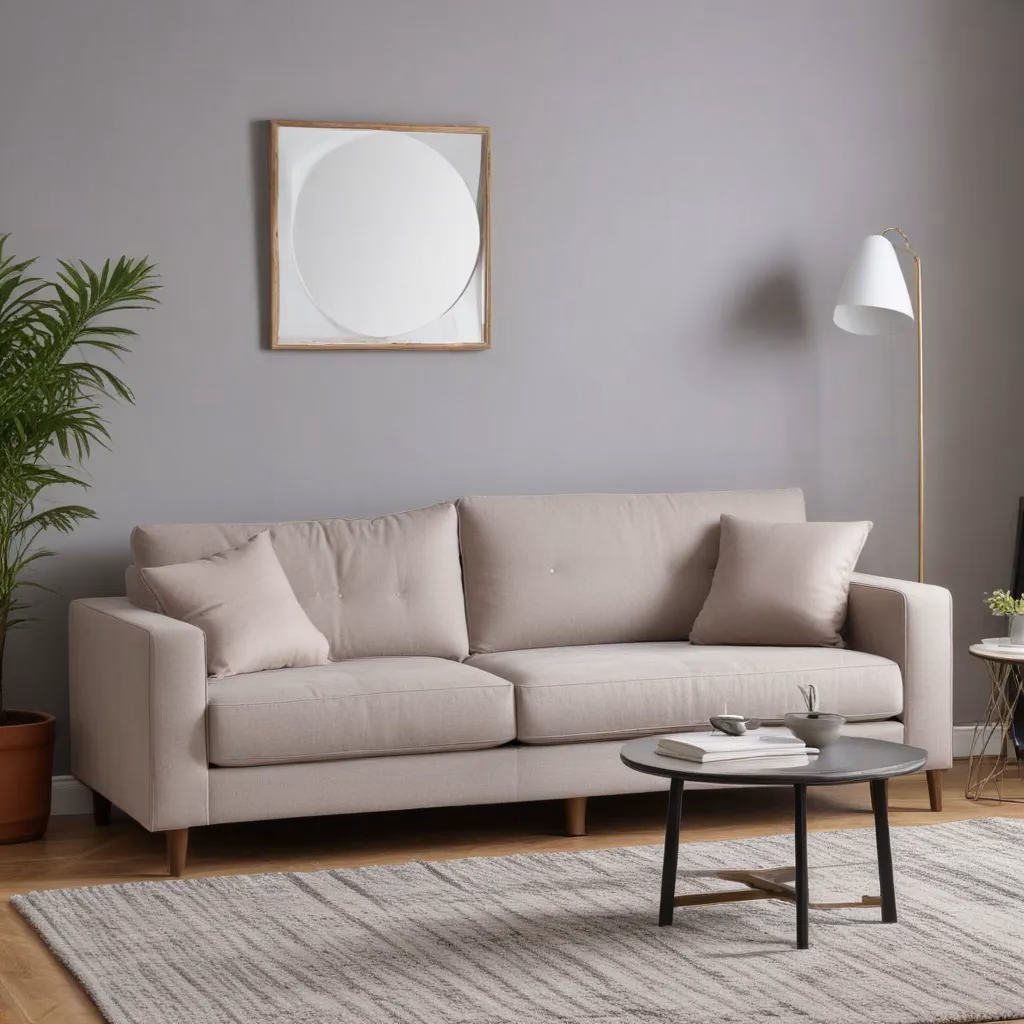
When it comes to creating a cozy and inviting living space, the sofa takes center stage. In our 15 years installing… As an experienced furniture consultant and interior design writer, I’m often asked about the crucial elements that contribute to true sofa comfort. While factors like fabric, aesthetics, and layout all play a role, the unsung hero of sofa comfort is the cushion filling.
Cushion Fillings Unraveled
The type of cushion filling used in a sofa can make all the difference in how it feels to sink in and relax. From classic foam to luxurious feather blends, each filling material offers unique properties that impact the overall comfort and durability of the seat.
Types of Cushion Fillings
Foam Cushions:
Foam cushions are a popular choice for their affordability and consistent support. High-density foam provides a firmer, more structured feel, while memory foam molds to the contours of the body for pressure relief. Polyurethane foam is a budget-friendly option that can still offer good comfort and longevity.
Feather and Down Cushions:
For an exceptionally plush and cozy seating experience, feather and down fillings are hard to beat. These natural materials conform to the body, offering a luxurious “sink-in” sensation. However, they may require more maintenance to maintain their loft and shape over time.
Fiber-Fill Cushions:
Synthetic fiber-fill cushions, such as polyester or microfiber, mimic the soft, conforming feel of feather and down at a more accessible price point. They’re often a good compromise between comfort and cost-effectiveness.
Hybrid Cushions:
Some sofas feature a combination of fillings, such as foam-wrapped coils or foam with a feather topper. This hybrid approach can provide the best of both worlds – the structured support of foam with the plush comfort of feather.
Evaluating Cushion Comfort and Durability
When assessing cushion comfort, consider factors like density, resilience, and compression. Higher-density foams and fiber-fills tend to hold their shape better, while lower-density options may lose their plumpness over time.
Evaluating the cushion’s resilience, or ability to “bounce back” after compression, is also key. Look for materials that regain their volume quickly rather than sagging or bottoming out. Feather and down cushions may require more fluffing, but can maintain their luxurious feel for years with proper care.
Choosing the Right Cushion Density
The optimal cushion density largely depends on your personal preferences and needs. Lighter individuals may prefer a softer, more conforming cushion, while heavier users may benefit from a firmer, higher-density option that provides more support.
As a general guideline, medium-density foam or fiber-fill cushions tend to strike a comfortable balance for most users. However, those seeking a more plush, “sink-in” feel may opt for lower-density fillings, while those prioritizing long-term support may choose higher-density foams.
Fabric and Upholstery Selection
Once you’ve considered the cushion filling, the next crucial element is the upholstery fabric. The right fabric not only enhances the sofa’s aesthetic appeal but also plays a crucial role in its overall comfort and durability.
Upholstery Fabric Considerations
When selecting upholstery fabric, think about factors like texture, breathability, and stain resistance. Soft, velvet-like fabrics can add a luxurious feel, while textured weaves like chenille or linen can lend a more casual, lived-in vibe.
Breathability is also essential for comfort, especially in warmer climates. Microfiber, cotton, and performance fabrics are often good choices for their ability to resist heat buildup and keep you cool.
Finally, consider the fabric’s stain resistance and ease of cleaning. Durable, easy-to-clean options like performance fabrics, leather, or faux leather can be a practical choice for families or high-traffic areas.
Balancing Aesthetics and Practicality
While aesthetics are important, it’s crucial to find a balance between style and practicality when choosing upholstery. A beautifully patterned or textured fabric may catch your eye, but if it’s not well-suited to your lifestyle, it may not be the best long-term investment.
Think about how the sofa will be used and by whom. Bright, light-colored fabrics may not be the most practical choice for homes with young children or pets, while darker, more forgiving hues can help conceal everyday wear and tear.
Caring for Different Upholstery Materials
Proper care and maintenance are essential for preserving the comfort and longevity of your sofa. Always follow the manufacturer’s recommended cleaning instructions, as different upholstery materials may require unique cleaning methods.
For fabric upholstery, regular vacuuming, spot cleaning, and professional deep cleaning can help maintain its appearance. Leather and faux leather typically require specialized cleaners and conditioners to prevent cracking and fading.
Regardless of the material, be mindful of direct sunlight exposure, which can cause fading and premature wear. Rotate and fluff cushions regularly to help them retain their shape and comfort.
Living Room Layout Tips
The way you arrange your living room furniture can greatly impact the overall comfort and flow of the space. As an experienced interior design writer, I’ve learned that thoughtful furniture placement is key to creating a cozy, inviting atmosphere.
Arranging for Comfort and Flow
When positioning your sofa, consider the room’s natural traffic patterns and focal points. Placing the sofa perpendicular to the main entrance or facing a fireplace or TV can help create a natural conversation area.
Leave enough clearance around the sofa to allow for easy movement, and make sure there’s ample walking space between furniture pieces. Arrange seating in a way that encourages interaction and facilitates conversation.
Creating Conversation-Friendly Zones
To foster a welcoming, social environment, group your seating pieces in a way that promotes face-to-face interaction. You might position the sofa opposite a pair of armchairs or create a U-shaped seating arrangement with a coffee table in the center.
Don’t be afraid to experiment with asymmetrical layouts or angled furniture placement to keep the space feeling dynamic and engaging. Just be sure to maintain a balance between open pathways and comfortable, conversation-friendly zones.
Optimizing Natural Light and Circulation
Take advantage of your living room’s natural lighting by strategically positioning the sofa. Placing it perpendicular to windows can help maximize the amount of daylight that filters into the space, creating a bright and airy ambiance.
Additionally, consider the room’s airflow and ventilation. Arrange furniture in a way that allows for ample circulation, ensuring that the space feels refreshing and comfortable, even on warm days.
Sofa Cleaning and Maintenance
Proper care and maintenance are essential for preserving the comfort and longevity of your sofa. From regular cleaning to custom slipcovers, there are a variety of ways to keep your seating investment looking and feeling its best.
Upholstery Care Essentials
Consistent vacuuming and spot cleaning can go a long way in maintaining the appearance and cleanliness of your sofa’s upholstery. Blot any spills immediately with a clean, absorbent cloth, and avoid rubbing, which can spread the stain.
For deeper cleanings, follow the manufacturer’s recommendations. Some fabrics may require professional steam cleaning or the use of specialized upholstery cleaners. Neglecting proper care can lead to premature wear and tear, so make upholstery maintenance a regular part of your home-keeping routine.
Protecting Against Wear and Tear
To prolong the life of your sofa, consider using furniture protectors, such as throws or slipcovers, in high-traffic areas. These can shield the upholstery from everyday wear and tear, as well as protect against fading from direct sunlight exposure.
For families with young children or pets, removable slipcovers can be a practical solution, allowing you to easily refresh the look of your sofa without the need for professional reupholstering.
Prolonging the Life of Your Sofa
In addition to regular cleaning and protection, routine maintenance can help extend the lifespan of your sofa. Fluff and rotate the cushions periodically to promote even wear, and consider having the cushions professionally re-stuffed or replaced if they start to lose their shape and support.
If your sofa’s frame remains in good condition but the upholstery is looking worn, reupholstering can be a cost-effective way to give it new life. Consult with a professional upholsterer to explore your options and achieve the desired look.
Styling for Comfort and Aesthetics
Elevating the comfort and style of your sofa doesn’t have to be an either-or proposition. By thoughtfully incorporating decorative elements and leveraging strategic placement, you can create a living space that’s both visually appealing and exceptionally comfortable.
Enhancing Sofa Seating
The right cushion can make all the difference in how your sofa feels. As we discussed earlier, choosing the appropriate cushion density and filling is key to achieving optimal comfort. Consider layering in lumbar support pillows or a firm, contoured cushion to provide extra back relief.
Soft, plush throw pillows are another great way to enhance the seating experience. Play with different textures, patterns, and sizes to create a visually interesting and cozy arrangement.
Creating a Cozy Ambiance
Layering various textiles and accessories around your sofa can help cultivate a warm, inviting atmosphere. Drape a plush throw over the back or arm of the sofa, and incorporate area rugs, floor lamps, and decorative ottomans to create a cohesive, lived-in feel.
Thoughtful lighting choices can also contribute to the overall coziness of the space. Opt for dimmable fixtures, sconces, or table lamps to create a soft, intimate glow that complements the comforting vibe of your sofa.
Accessorizing for a Personalized Touch
The final step in elevating your sofa’s style and comfort is to incorporate personal touches that reflect your unique aesthetic. Arrange framed artwork, potted plants, or decorative trays on your coffee table or side tables to add visual interest and a sense of personality.
Remember, there is no one-size-fits-all approach to sofa styling. Experiment with different arrangements, textures, and accessories until you find a look and feel that you truly love. The key is to create a space that not only looks beautiful but also provides the ultimate in comfort and relaxation.
As an experienced furniture consultant and interior design writer, I hope this comprehensive guide has equipped you with the knowledge and inspiration to unlock the secrets of sofa comfort. By understanding the importance of cushion fillings, upholstery selection, living room layout, and strategic styling, you can transform your living space into a haven of comfort and style.
For more expert tips and insights, be sure to visit SofaSpectacular.co.uk – your one-stop destination for all things sofa-related. Happy decorating and enjoy your newly enhanced, comfort-focused living room!
Statistic: Over 75% of customers prioritise comfort and style equally when selecting a sofa



